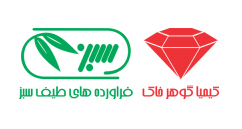Introduction and Properties
The dioctyl sodium sulfosuccinate molecule has two distinct groups. The hydrophilic group, which consists of the sodium sulfosuccinate molecule. This group helps to dissolve polar compounds by reacting with them (such as sap secreted by aphids or psyllids) and the hydrophobic group, the dioctyl group, which allows them to dissolve when reacting with non-polar compounds. Some of these are chitin or waxes. Due to the presence of polar groups, the active part of diocta is able to remove sap from the leaf surface (such as that secreted by psyllids). At low doses, diocta acts as a surfactant, which reduces the surface tension of the spray mixture and improves their suspension and adhesion. Thus, its dispersion and adhesion on the leaf surface are optimized. At medium to high doses, it increases the effect of plant pesticides by improving their absorption by the plant membrane. When added to the additive tank, it has a reinforcing effect on plant pesticides. Waxes soften or dissolve the organic matter in the leaf cuticle, which allows systemic pesticides to penetrate the plant more deeply. This compound does not act as an insecticide like other pesticides, but rather dissolves the insect’s chitinous cuticle, making it vulnerable to weathering and preventing the spread of pests. Using Dioctave in the pre-harvest stages increases the shelf life and shelf life of products. Other properties of this product include: increased activity and efficiency of pesticides and reduced dosage, surfactant effect and reduced evaporation, greater spreadability and adhesion, reduced drift and waste of spray solution, safe and harmless for the user and environmentally friendly, free of any adverse effects on beneficial insects, and ultimately a suitable product for use in integrated pest control (IPM).
Ingredients: Dioctyl Sodium Sulfosuccinate 70% (W/V), Additives and Inert Ingredients 30% (W/V)
Time of Use: Simultaneous with all pesticides
Instructions for use
| Products | Dosage | Industrial plants | 75 ml per 100 liters of water |
|---|---|
| Citrus fruits | 75 ml per 100 liters of water |
| Fruit Trees | 50 to 75 ml per 100 liters of water |
| Vegetables | 30 to 50 ml per 100 liters of water |
Important notes: Do not use in combination with oils and their derivatives, permanganates, polysulphides or any product containing fat. Such as some systemic fungicides. It is recommended to avoid using it in extreme temperatures or light to prevent it from falling off the leaf surface due to high temperatures and to prevent water from escaping between the tissues.





